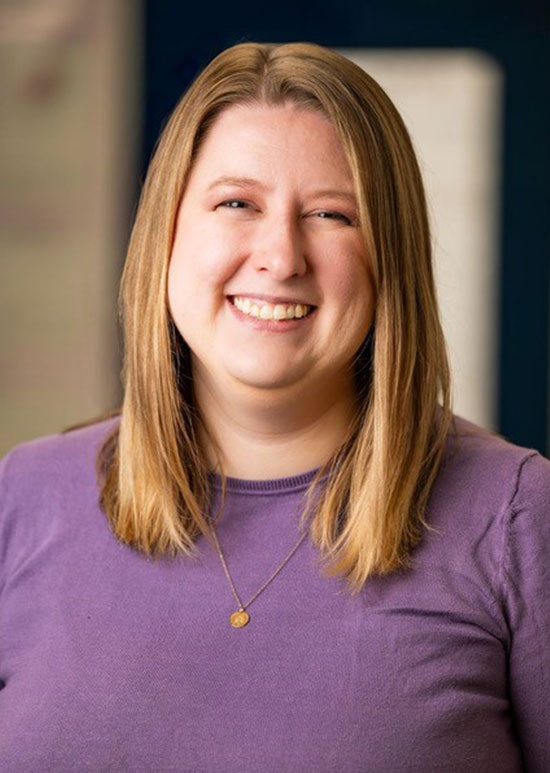
Lauren Rossiter
- B.S, Messiah College
- Ph.D., Temple University
Courses taught:
- CHE 231 Organic Chemistry I: 4 Credits.
- CRL 231 Experimental Organic Chemistry I: 2 Credits.
- CHE 232 Organic Chemistry II: 3 Credits.
Research Interests: Organic chemistry, organic synthesis, and photochemistry.
Research Summary: My research lab focuses on the synthesis of 2-pyridone tethered benzene photosubstrates which undergo photochemistry to result in the formation of complex novel photoproducts. Photochemistry has become increasingly popular in the chemical industry as it allows for molecules to react to quickly create complex structural scaffolds in fewer steps than a traditional approach. My research includes a synthetic component in addition to the photochemistry, in which students learn classic skills in organic synthesis, such as working under inert conditions with Schlenk lines, flame-drying, Soxhlet extractions, column chromatography, general extraction and purification techniques, and more! The photosubstrates we make are then exposed to UV light in a photochemical chamber to reach an excited energy state, leading to transformations which are difficult, if not impossible, to achieve through traditional chemistry. After analysis and characterization, these novel structures can be reported in their own right, but may also bear semblance to known natural products, giving them potential applications in medicinal chemistry.
Selected Publications
- *Kubasek, L.; Rossiter, L.M. "Chemistry of Paint: Interdisciplinary Laboratory Experiments for Undergraduate and High School Students." Submitted.
- *Gole, M.T; *Pauls, P.; *Hartlaub, S.F.; Nataro, C.; Rossiter, L.M.; O'Connor, A.R.; Chan, B.C. "Synthesis and electronic properties of transition metal complexes containing sulfonamidoquinoline ligands." Polyhedron, 205, 2021.
- Post, S.J.; Keohane, C.E.; Rossiter, L.M.; Kaplan, A.R.; Matuska, K.; Khowsathit, J.; Karanicolas, J.; Wuest, W.M. "Target-based design of promysalin analogs identifies a new putative binding cleft in succinate dehydrogenase." ACS Infec.Dis., 2020.
*Denotes undergraduate researcher
